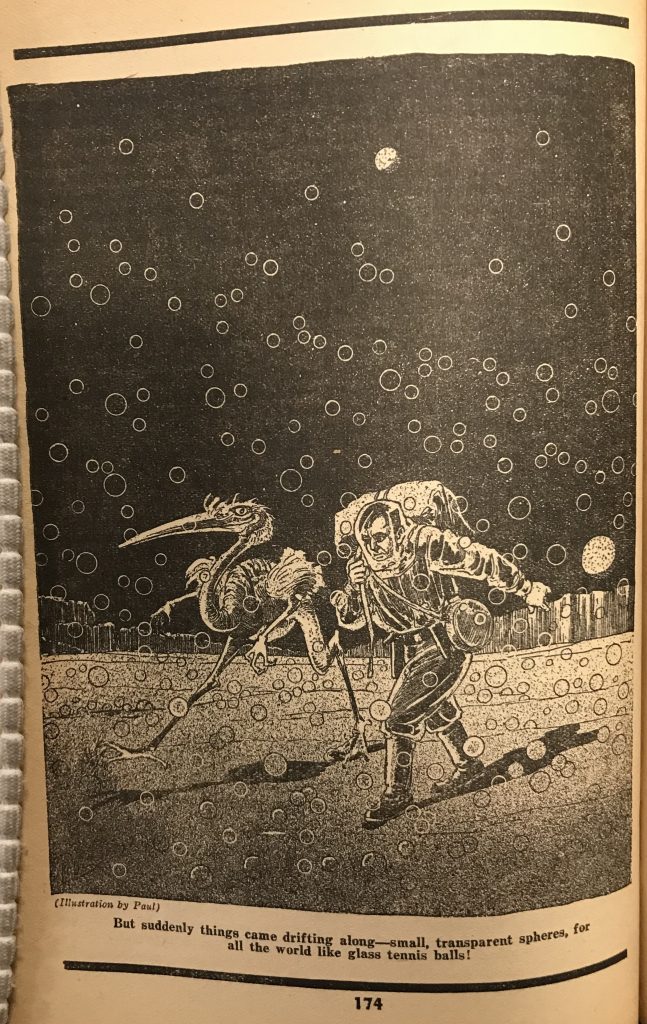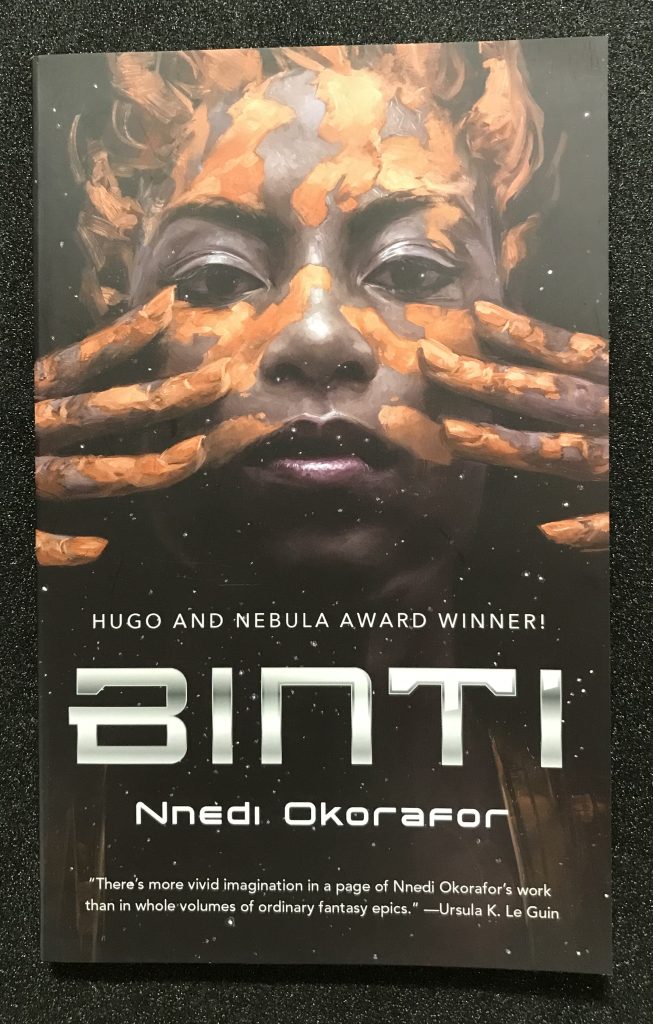On Friday 26th of May we facilitated a tour of some of the Science Fiction Collections material on the theme of human/alien communication for a group of science fiction authors undertaking a creative writing workshop with Language Evolves.
Language Evolves is a service set up by Dr Hannah Little (University of Liverpool), Dr Sean Roberts (Cardiff University), and Dr Catriona Silvey (author of Meet Me in Another Life (2021)) to aid science fiction writers to develop stories based on research in language evolution. Language Evolves holds a series of workshops for authors given by linguistics experts to accompany an associated short story competition. The winning story is published in Britain’s leading science fiction magazine, Interzone, and the author receives £400. The closing date for submissions for this year’s competition is the 30th of September and includes Sue Burke, author of Semiosis (2018), as a judge.
This year, the workshops were held at the University of Liverpool and I had the pleasure of hosting two groups of workshop participants. I arranged a selection of material from the Science Fiction Collections on the theme of human/alien communication. I hoped that the material, like the linguistics workshops, would inspire language-based stories, as well as showcasing some of the exciting material that we hold.
The study of language evolution and first contact are inherently connected. The field of language evolution is interested in how our human ancestors first started to communicate and use language. Our ancestors had to negotiate how gestures or vocalisations related to the meanings they were trying to convey, and in first contact stories we are trying to do something very similar with the aliens. Whether it’s trying to learn their language, teach ours, or come up with a completely new system to facilitate communication, we have to think about what the aliens know and what they can perceive. In order to start communication, we must first consider what our audience knows, what they can perceive, and what they will recognise as communication.
There is a long history of an optimistic belief in inter-species communication in science fiction spanning from the pulp-era in the 1920s to the present day. These narratives tend to contend that the first successful communication between aliens and humans will be through shared understandings of mathematic and scientific fundamentals, such as geometry, arithmetic, prime numbers, the structure of the hydrogen atom, etc.
Many early science fiction writers were themselves either scientists or science writers, some of whom had expertise in communication technologies. I began the tour by showing the visitors one of our prize objects, a typewriter used by the science fiction author Arthur C. Clarke. Clarke used the typewriter to compose one of his most influential science pieces ‘Extra-terrestrial Relays’ (1945) in which he proposed the use of Geostationary satellites to relay radio waves around the globe. Though not specifically related to communication with aliens, Clarke’s essay shows the kind of scientific influence and positive thinking that went into science fiction stories in this period.
In early science fiction stories, the problem of communication is easily overcome with logic and knowhow. An example, which I presented to the group, came in the July 1934 issue of Wonder Stories edited by Hugo Gernsback. The story, ‘A Martian Odyssey’ by Stanley G. Weinbaum, narrates the adventures of an astronaut, Jarvis, who crash lands on Mars. Jarvis encounters a series of puzzling alien inhabitants including a silicon-based alien that excretes sand bricks and a monster that ensnares prey using their dreams. Jarvis comes to understand these strange beings with the help a bird-like alien that he meets called Tweel. At first, Jarvis is unable communicate with Tweel until he decides to ‘give up the language business’ and try mathematics instead. Tweel and Jarvis are both able to demonstrate simple arithmetic using stones: where variable language fails, ‘universal’ maths succeeds. As pictured in the accompanying artwork by Frank R. Paul, Jarvis and Tweel set of breezily across the landscape, confident they will be able to solve any puzzles that they encounter.
Not all science fiction authors have held such optimistic visions of first contact. H.G. Wells set the terms of pessimistic alien encounters with War of the Worlds (1898) in which Martian invaders conquer Earth without any attempts at communication. Wells’ novel provided an alternative narrative to pulp optimism, running through the merciless aliens of Independence Day (1996) to Liu Cixin’s bleak vision of alien hostility The Remembrance of Earth’s Past trilogy (2006-2010).
Though perhaps the naivete and bluster of early science fiction may have declined in the face of these narratives, hopeful stories of successful alien/human communication via shared mathematic fundamentals have continued to the present day. In Nnedi Okorafor’s 2015 novella, Binti, the titular character must use her knowledge of mathematics to establish peace between the warlike Meduse and humans who to this point have never made any successful communication. On her way to her first semester of university, Binti’s ship is attacked by the Meduse. They kill all those aboard and almost kill Binti herself before she finally makes a communications break through. This initial communication is enough to broker a peace and marks the first steps of a strengthening relationship between the Meduse and humans.
So, though the belief in friction free contact has not stood the test of time, there remains a strand of science fiction that maintains a hope in human/alien contact. Language Evolves workshops and competition continue the tradition, building on the cross-over between science and science fiction that we can see from the early days of Arthur C. Clarke and the ongoing interest in the problems and possible solutions to inter-species communication. The Science Fiction Collections at the University of Liverpool provide an extensive repository of examples of authors who have attempted to solve this fundamental question of communication and I hope it will be a source of inspiration for many more years to come.


